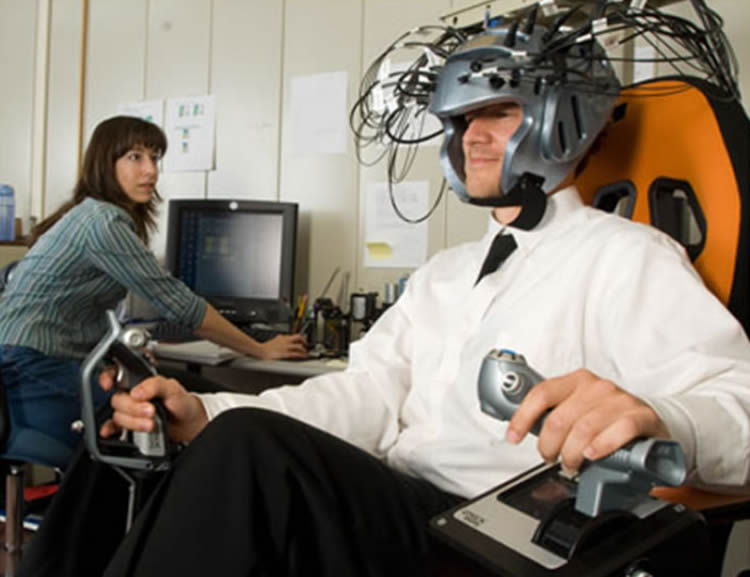First MS study to use functional near infrared spectroscopy to examine brain activation during working memory task.
Using functional near infrared spectroscopy (fNIRS), Kessler Foundation researchers have shown differential brain activation patterns between people with multiple sclerosis (MS) and healthy controls. This is the first MS study in which brain activation was studied using fNIRS while participants performed a cognitive task. The article, “Neuroimaging and cognition using functional near infrared spectroscopy (fNIRS) in multiple sclerosis,” was published online on June 11 by Brain Imaging and Behavior. Authors are Jelena Stojanovic-Radic, PhD, Glenn Wylie, DPhil, Gerald Voelbel, PhD, Nancy Chiaravalloti, PhD, and John DeLuca, PhD.
Researchers compared 13 individuals with MS with 12 controls for their performance on a working memory task with four levels of difficulty. Most such studies have employed functional magnetic resonance imaging (fMRI); fNIRS has been used infrequently in clinical populations, and has not been applied previously to neuroimaging research in MS. Studies comparing fMRI findings with those of fNIRS, however, show broad agreement in terms of activation patterns.

Results showed differences in activation between the groups that were dependent on task load. The MS group had an increase in activation at low task difficulty and a decrease in activation at high task difficulty. Conversely, in the control group, activation decreased with low task difficulty and increased with high task difficulty. Performance accuracy was lower in the MS group for low task load; there were no differences between the groups at the higher task loads.
“The data we obtained via fNIRS are consistent with fMRI data for clinical populations. We demonstrated that fNIRS is capable of detecting neuronal activation with a reasonable degree of detail,” noted Glenn Wylie, DPhil, associate director of Neuroscience and the Neuroimaging Center at Kessler Foundation. “We attribute the differences in brain activation patterns to the effort expended during the working memory task rather than to differences in speed of processing,” he added. “Because fNIRS is more portable and easier to use that fMRI, it may offer advantages in monitoring cognitive interventions that require frequent scans.”
In addition to working memory, future research in clinical populations should focus on processing speed and episodic memory, cognitive functions that are also affected in MS.
Supported by National MS Society (MB0024 (JSR); NIH (iF32NS055509) (GV); Kessler Foundation.
Contact: Carolann Murphy – Kessler Foundation
Source: Kessler Foundation press release
Image Source: The image is credited to fNIRS Cognitive State Monitoring Lab/NASA and is in the public domain
Original Research: Abstract for “Neuroimaging and cognition using functional near infrared spectroscopy (fNIRS) in multiple sclerosis” by Jelena Stojanovic-Radic, Glenn Wylie, Gerald Voelbel, Nancy Chiaravalloti, and John DeLuca in Brain Imaging and Behavior. Published online June 11 2014 doi:10.1007/s11682-014-9307-y






